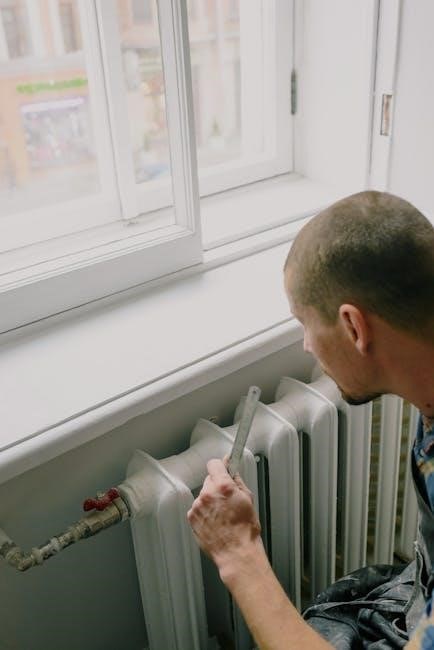cat c15 valve adjustment pdf
Struggling with your Cat C15 valve adjustment? Download our FREE PDF guide! Simple steps, expert tips, and everything you need to get it done right. No more guesswork!
Cat C15 Valve Adjustment Guide
This guide provides a comprehensive overview of performing valve adjustments on Cat C15 engines․ Proper adjustment is critical for optimal engine performance, fuel efficiency, and longevity․ Follow these instructions carefully for successful valve maintenance․
The Cat C15 engine is a popular choice for heavy-duty applications, and maintaining its performance requires regular valve adjustments․ This process involves setting the correct clearance, or lash, between the valve stem and rocker arm․ Proper valve adjustment ensures optimal combustion, reduces engine noise, and prevents premature wear of valve train components․ This guide offers detailed instructions and specifications for adjusting valves on C15 engines, including information on intake and exhaust valves․ By following these steps, technicians can ensure the C15 engine operates efficiently and reliably, prolonging its lifespan and preventing costly repairs․
Importance of Regular Valve Adjustment
Regular valve adjustments on a Cat C15 engine are crucial for maintaining optimal performance and preventing engine damage․ Proper valve lash ensures efficient combustion, extends engine life, and maximizes fuel economy․
Benefits of Maintaining Correct Valve Lash
Maintaining correct valve lash in your Cat C15 engine yields several significant benefits․ Accurate valve lash contributes to optimal engine performance by ensuring proper valve timing and efficient combustion․ This leads to improved fuel economy, reducing operational costs․ Furthermore, correct valve lash minimizes stress on valve train components, extending their lifespan and preventing premature wear․
Properly adjusted valves also reduce the risk of valve and seat damage, preventing costly repairs․ Consistent valve lash ensures smooth engine operation, reducing noise and vibration․ By adhering to recommended adjustment intervals, you proactively safeguard your engine’s health and longevity․
Tools and Materials Required
Performing a C15 valve adjustment requires specific tools, including a feeler gauge set, torque wrench, sockets, wrenches, and possibly a specialized tool for injector height if adjusted at the same time․
Specific Tools for C15 Valve Adjustment
For a C15 valve adjustment, a precise feeler gauge set is essential to measure valve lash accurately․ A torque wrench capable of measuring around 30 Nm (22 lb ft) is needed for tightening the locknuts․ Socket and wrench sets fitting the locknut sizes are required․ An Allen wrench is necessary for adjusting the IVA pistons and Jake brakes, if equipped․ A specialized tool like the 9U-7227 may be needed to adjust injector height, and a soft mallet can help seat the lifter roller․
Preparation Before Adjustment
Prior to starting the adjustment, ensure the engine is cool to prevent burns․ Disconnect the batteries for safety․ Gather all necessary tools and consult the engine’s service manual for specific instructions․
Ensuring Engine is Cool and Safe
Before commencing any valve adjustment procedure on a Cat C15 engine, prioritizing safety and ensuring the engine is sufficiently cool is paramount․ Allow ample time for the engine to cool down completely after operation․ Hot engine components can cause severe burns upon contact․ Disconnect the battery cables to prevent accidental starting during the adjustment process․ This eliminates the risk of injury from moving parts․ Verify that the work area is well-ventilated to avoid inhaling any fumes․ Wear appropriate personal protective equipment (PPE), including safety glasses and gloves․ Double-check that all necessary tools are readily available and in good working order before starting․
Finding Top Dead Center (TDC)
Locating Top Dead Center (TDC) is a critical step in the valve adjustment process․ This ensures accurate valve lash settings․ Pinning the flywheel is the most reliable method for finding TDC․
Pinning the Flywheel Procedure
To accurately set TDC, you need to “pin” the flywheel․ Begin by rotating the engine clockwise until you can visibly locate the timing mark through the timing window․ Next, insert the appropriate size pin into the flywheel housing to lock it in place․ Ensure the pin is fully engaged to prevent any movement during valve adjustment․ Double-check that the engine is indeed at TDC by verifying the alignment of timing marks․ This precise positioning guarantees the correct valve lash adjustments for the cylinders being serviced during each stage of the procedure, following the firing order․

C15 Valve Lash Specifications
Accurate valve lash specifications are crucial․ Refer to the engine’s service manual or the engine data plate․ These specifications provide the precise clearances needed for intake and exhaust valves․
Intake and Exhaust Valve Clearances
The C15 engine requires specific valve lash settings for both intake and exhaust valves to ensure optimal engine performance and longevity․ Typically, intake valve clearances are set tighter than exhaust valve clearances due to the different operating temperatures and expansion rates․
Consult the engine’s service manual or the information on the engine’s dataplate for the exact specifications․ These specifications will list the required clearance, usually measured in thousandths of an inch (e․g․, 0․015″ for intake and 0․030″ for exhaust)․
Always adhere to these specifications during adjustment to avoid potential engine damage or performance issues․ Using incorrect clearances can lead to valve train noise, reduced power, or even valve failure․

Adjustment Procedure: Step-by-Step
This section details the process of adjusting the valves on a C15 engine․ Follow each step meticulously, ensuring accurate measurements and proper torque settings to achieve the best possible results․
Loosening Locknuts and Adjusting Screws
To begin the adjustment, first identify the valve you will adjust based on the engine’s position (TDC)․ Use the correct sized wrench to carefully loosen the locknut securing the adjusting screw․ Avoid stripping the nut by using a properly fitting tool․ Once the locknut is loose, you should be able to freely turn the adjusting screw․ Turn inlet adjustment screw while valve adjustment locknut is being held from turning․ Adjust the valve lash until the correct specification is achieved․ Refer to the official Caterpillar documentation for the specific valve lash specifications for your C15 engine model․
Adjusting IVA Pistons and Jake Brakes
This section outlines the procedure for adjusting IVA (Intake Valve Actuation) pistons and Jake Brakes on the Cat C15 engine․ These adjustments are critical for proper engine braking and performance․
Specific Procedures for IVA and Jake Adjustments
To properly adjust the IVA pistons, first loosen the locknuts․ Then, use an Allen wrench to back off the pistons by half a turn to ensure they aren’t touching the valves during adjustment․ Adjust the IVA pistons to ․020 inches, ensuring a snug fit with the feeler gauge․ Wait for the oil to seep out, then tighten the locknut, allowing the gauge to slide out smoothly․
For Jake brakes, follow a similar procedure, adjusting them to ․027 inches․ Snug the adjusting screw against the feeler gauge and wait for the oil to settle before tightening the locknut․
Torque Specifications for Locknuts
After adjusting the valve lash, tighten the valve adjustment locknut to a torque of 30 ± 7 Nm (22 ± 5 lb ft) while holding the adjustment screw․ Recheck the adjustment after tightening․
Proper Torque Values for Valve Adjustment Locknuts
Ensuring the correct torque on the valve adjustment locknuts is crucial for maintaining the integrity of the valve lash settings․ After the valve lash adjustment is completed, carefully tighten the locknut while preventing the adjustment screw from rotating․ The specified torque for the valve adjustment locknuts is typically around 30 ± 7 Nm (22 ± 5 lb ft)․
Using a torque wrench to achieve this value is essential to prevent over-tightening, which can damage the threads or the valve components, or under-tightening, which can lead to the locknut loosening over time and causing valve train noise or performance issues․ Always recheck the valve lash after tightening the locknut to confirm that the adjustment has not changed during the tightening process․

Rechecking and Final Verification
After tightening the locknuts, recheck each valve lash to ensure it remains within the specified range․ This verification step is crucial for confirming the accuracy of the adjustment before completing the procedure․
Ensuring Correct Lash After Tightening
Once all locknuts have been torqued to the specified value, a final verification of the valve lash is essential․ Use the appropriate feeler gauge to re-measure the clearance between the rocker arm and the valve bridge․ This step ensures that the tightening of the locknut has not altered the initial adjustment․
If the lash has changed and falls outside the acceptable range, loosen the locknut and repeat the adjustment procedure․ It’s crucial to achieve the correct lash to maintain engine efficiency and prevent potential damage․ Confirm all values are within spec before proceeding․

Troubleshooting Common Issues
This section addresses common problems encountered during valve adjustments․ It provides potential solutions for issues like difficulty finding TDC, incorrect lash readings, and locknut torque problems, aiding in smoother maintenance procedures․
Addressing Problems During Valve Adjustment
During the adjustment, you might face challenges like difficulty rotating the engine, indicating possible internal issues․ Ensure correct TDC positioning; misalignment leads to improper adjustments․ Feeler gauges must slide with slight drag; too loose or tight suggests incorrect lash․ Re-verify measurements after tightening locknuts, as torque can alter settings․
Stripped threads on adjustment screws or locknuts necessitate immediate replacement․ If unusual noises persist post-adjustment, re-inspect valve train components for wear or damage․ Always consult a qualified technician when unsure, preventing further engine damage․

